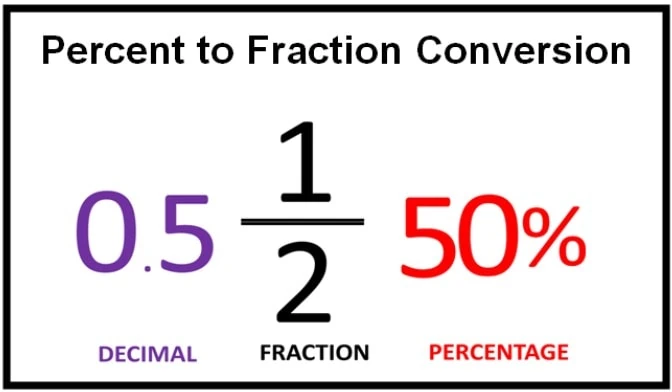In this modern age, sales and marketing analytics require you to be precise in all aspects and calculations. The percentage is related to aspects like conversion rates, growth, or market shares.

Expressing percentages in fractions helps in a clear understanding of data and lets you have clear communication. By doing so, you can make better informed and strategic decisions because the conversion from percentages to fractions provides a deep insight into the relationship of the data. Meanwhile, fractions simplify the interpretation of complex data. It is very helpful in presenting the data to the stakeholders who can easily understand the findings.
The ability to convert percentages into fractions can be a valuable skill. In this article, we’ll explore the tips and tricks for efficiently using the percent to fraction conversion in the realm of sales and marketing analytics.
Understanding The Basics
Before going deeper, it’s crucial to understand the fundamentals. The percentage represents the fraction out of 100. For example, 25% is equivalent to the fraction ¼. In sales and marketing data, percentages represent the profit margins, market shares, growth rates, etc.
Having the ability to convert the percentages to fractions increases your analytical capabilities and makes the interpretation of percentages easier for you.
Tips:
Choose The Right Tool
Choosing the precise tool is necessary for converting percent to fractions accurately. Today, several online tools are available that are offered by different websites. With the help of them, you can easily convert percentages to fractions. Before using an online tool, make sure the tool you have selected works correctly and it can accommodate your specific needs.
Know Your Data
Determine the context of your data to understand whether you have to deal with marketing conversion percentages, sales growth rates, or the profit margin. Knowing your data helps you in the precise interpretation of the resultant fractions.
Learn the Conversion Process
Learn how to manually convert percentages to fractions to reduce the risk of human errors. Keep in mind a percentage is a fraction having a denominator of 100. For instance, if you have 40 %, then you can write it as 40/100 and if you simplify it more then you will have
2/5.
Explanation:
Step # 1:
40 / 100 = 0.4
Step # 2:
04 / 10
Step # 3:
(04 ÷ 2)/(10÷2) = 2 / 5
Check For Simplification Opportunities
After performing the conversion, check whether the resultant fraction can be further simplified or not. If it is, then do it. The simplification of fractions makes the data more concise and easier to interpret.
Use The Percent To Fraction Calculator
To enhance efficiency and to save time opt for an online calculator. Using the online tool will not only save time and effort but also reduce the risk of human errors. Just add percentages and get the resultant fraction in a matter of seconds without much manual intervention. It is particularly very useful when you have to deal with a huge number of data sets, just make a click and get the result in the form of a fraction.
Steps:
- Access the calculator from your browser
- Add the percentages
- Click on the calculate button to proceed with the conversion and that’s all, you will see the step-by-step solution right in front of you
Verify Results With Cross-Checking
Get the assistance of the percent to fraction converter for verifying the results. Verification of the results enhances the accuracy of your calculations and leads to the correct decisions and marketing strategies.
Pricing And Discount Strategies
In sales analytics, percentages are vital for pricing strategies. When deciding on discounts or markups, knowing the fraction equivalent of these percentages helps in making strategic pricing and discount decisions.
Enhance Data Visualization
Visuals are crucial for showcasing sales and marketing analytics. Integrating fractions with percentages in your charts and graphs adds more insights and makes your data easier to understand. Meanwhile, This dual representation enhances the visual appeal of marketing analytics and facilitates a more comprehensive understanding.
Stay Updated With Industry Standards
Over time, marketing strategies continue to change. Similarly, the standards of the industry. Therefore it’s necessary to keep yourself updated about the rules and benchmarks of the relevant industry. It keeps you on the right track while performing the conversion from percentages to fractions.
Conclusion
In the world of sales and marketing analytics, being able to turn percentages into fractions is super important. By using the above-mentioned tips you can get it right and boost your analytical skills. Picking the right percent to fraction calculator, knowing your data, and sticking to good practices, will elevate your expertise in developing effective sales and marketing strategies. This way, you can facilitate effective communication of marketing insights and findings.









0 Comments